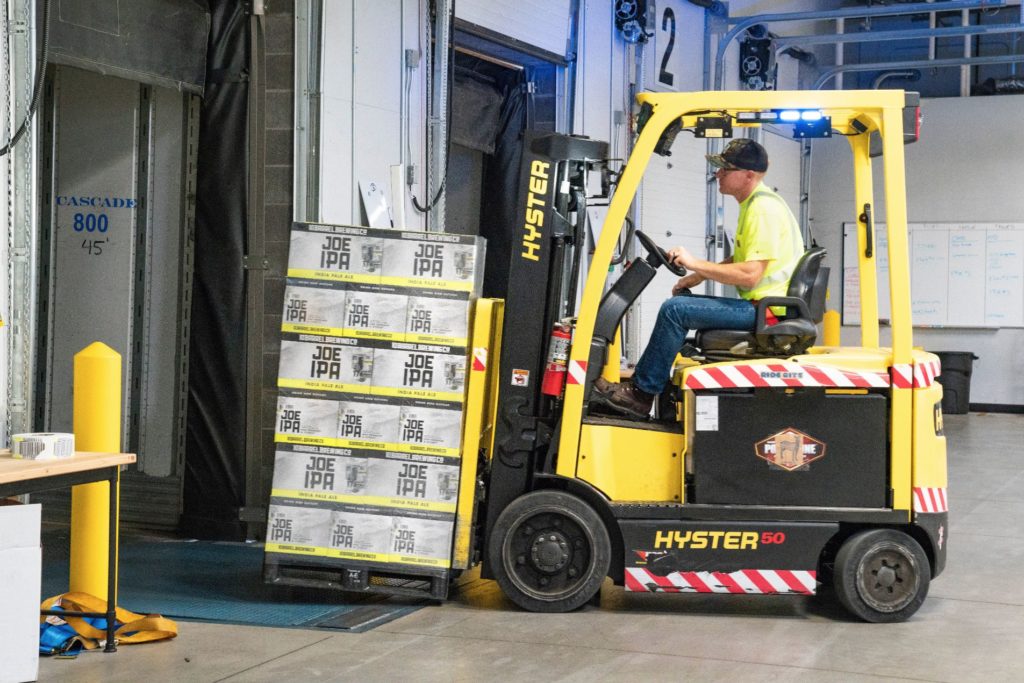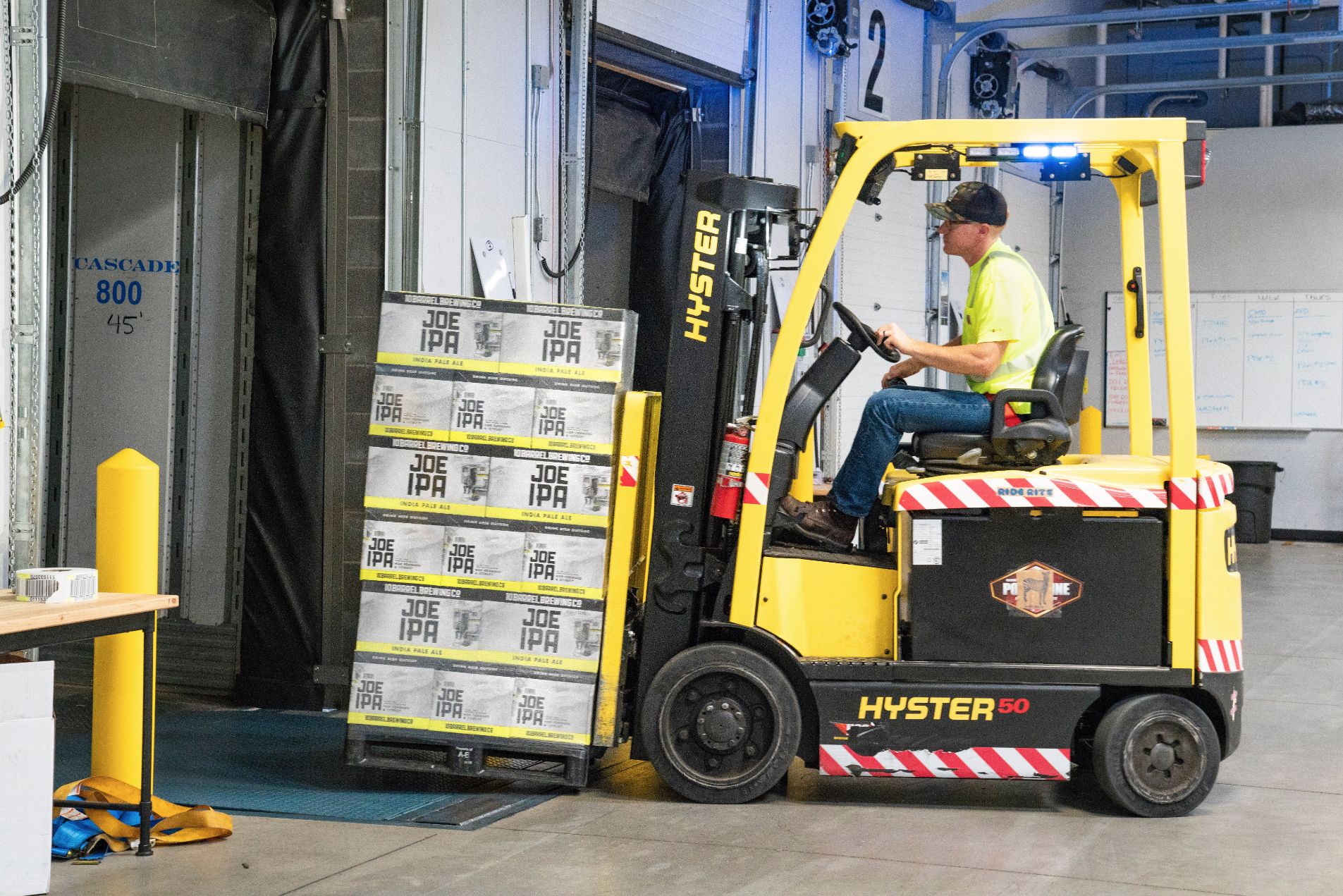
Updated on 11 January 2021
In this article, find the solution to:
- Challenge 1: What is the best way to document my knowledge?
- Challenge 2: How can I adapt my training sessions to meet the needs of different groups of workers?
- Challenge 3: How can I overcome talent shortages?
- Challenge 4: What can I do to prevent high fluctuation?
- Challenge 5: How can I motivate workers to train?
- Challenge 6: How can I train and monitor my team if I am not always there?
After conducting hundreds of interviews about warehouse worker training in the logistics industry, it is clear that the challenges in warehouse worker training are similar, regardless of which department you are working in.
This article breaks down the various challenges and solutions for developing successful training programs for warehouse workers based on expert knowledge of the training experience.
Challenge 1: What is the best way to document my knowledge?
Having proper documentation of knowledge and basic processes means any person can perform a job. It also empowers the warehouse staff to refer back to this information whenever they need to refresh their memory.
The most efficient way of structuring information is to write it out as standard operating procedures (SOPs). This makes processes easy to understand and accessible at all points of the employee journey.
One way to begin structuring your knowledge is to use the cookbook approach. In this approach, you perform the task and note down every detail of each action in order, like a recipe.
After writing the details of each action, organize them into consecutive steps. Defining a step-by-step process makes it easy for anyone to follow the instructions and arrive at the same result.
You should also provide the reasoning behind each action so employees can internalize the knowledge and apply it consistently. For example, if a step saves money or is performed a certain way to protect the worker’s safety, explain that in your instructions.
When training warehouse employees, it is important to never assume your workers have previous knowledge about any task. The cookbook approach ensures that no step or requirement is overlooked. This way, even the most inexperienced new-hire can simply follow your instructions and be successful.
Every SOP should be a small task that the worker can understand and apply independently of the other SOPs. An SOP should never cover large or multiphase processes.
Related: A Guide to Writing Effective Work Instructions
Challenge 2: How can I adapt my training sessions to meet the needs of different groups of workers?
Workers come from different backgrounds. One of the most common training manager’s challenges is keeping these differences in mind when devising a training strategy. Successful warehouse trainers and warehouse managers are aware of workers’ different needs, abilities, and motivations.
One of the key factors for successfully managing warehouse workers is training efficiency. Particularly in the logistics sector, time is money. Warehouse managers want to get new employees working as quickly as possible without sacrificing the quality of the warehouse worker training program. Trainers should work together with managers to develop realistic warehouse training schedules. Although giving warehouse workers shorter training sessions may initially feel like a way to save time and money, you will end up investing more resources into fixing mistakes and retraining in the long run.
Related: The Essential Guide to Training Your Warehouse Trainer
If you’re onboarding a large group of workers, consider dividing them into small parties to maximize learning. You can group them by common factors such as language, which can pose a barrier in training. The increasing demand for employees in the logistics sector has often resulted in hiring workers who have come from abroad and haven’t yet learned the language. This is easily countered by having translations of all your training materials already in place.
Another challenge increasingly affecting the warehousing sector is dealing with big age gaps among your workers. Generational differences can help determine training techniques. For best results, break up training groups based on experience levels to ensure older and younger workers are receiving the right training for them. However, warehouse managers and trainers should encourage younger and older groups to interact and to learn from each other’s strengths.
For example, older employees might not feel as comfortable using computers and smart devices in the workplace. Younger employees could help them adapt to using technical devices on the job.
Simply asking your employees about their experiences and preferences with digital devices makes it easier to devise a successful warehouse training program.
Related: Employing and Training Older Workers
Another aspect of managing warehouse workers is that warehouse management needs to be transparent about the working conditions that the warehouse employees will experience. . Some workers easily take on tasks like heavy lifting or menial labor. Others need to be coached during their training sessions on how to best approach their work with a positive attitude. Warehouse managers can benefit from offering potential warehouse employees a trial day to show them what a typical day in a warehouse may look like.
Challenge 3: How can I overcome talent shortages?
Across blue-collar industries, the warehouse sector’s reputation for low wages, inflexible shifts, and high-pressure working conditions are affecting recruitment and retention. Recent studies show that the need for logistics professionals far outweighs the available workforce by a ratio of 6:1, or even 9:1 in some instances.
In recent years, historically low unemployment rates coupled with a huge increase in warehouse jobs due to the e-commerce boom, particularly during the COVID-19 epidemic, means there simply are not enough applicants to fill the open positions. Poorly managed warehouse worker recruiting processes and unsustainable warehouse practices have made the problem worse.
Related: Female Workers to Overcome Talent Shortage
In order to stay competitive in the current labor market, employers need to revise their warehouse employee recruitment processes. Moreover, companies must brand themselves in a way that better appeals to candidates for warehouse jobs.
For example, companies should consider shaking up the traditional recruitment process. One way to do this is to make applying more mobile-friendly by eliminating complicated and often unnecessary steps in the application process, such as uploading a CV.
Warehouse employers should evaluate which channels they use to advertise jobs. Candidates today are using their smartphones to look for jobs on social media platforms like Facebook and Instagram. Warehouse HR and management personnel should adapt their recruitment process to these channels and make it easy for potential warehouse applicants to apply directly via these mobile platforms.
Challenge 4: What can I do to prevent high fluctuation?
In blue-collar sectors like manufacturing, logistics, and transportation, turnover rates can be as high as 70%. Constantly losing and hiring talent can drag down daily operations and profit margins.
Furthermore, it is becoming increasingly difficult to replace lost talent because of overall shortages in the warehouse workforce. Frequently onboarding new employees is inefficient. Warehouse trainers can find it frustrating to answer the same questions and give the same training over and over again due to unnecessarily high fluctuation in the warehouse. Instead of upskilling existing employees to boost productivity and reduce mistakes, training managers must continuously invest time and resources into teaching the basics to new-hires.
The good news is that 75% of voluntary turnover is preventable.
One recurring problem that leads to this high turnover is that people quit their jobs because they want to earn more money. The high demand for warehouse workers means that employees can easily jump from one company to another in search of better pay. However, simply paying your employees well might not stop them from jumping ship. A recent survey showed that among blue-collar workers like warehouse employees, 78% of turnover has nothing to do with wages.
It is equally important to offer warehouse workers good working conditions, flexible shift scheduling, and benefits like paid vacation time.
Another solution for preventing churn is to show employees a clear future career path with the company. It is rewarding to celebrate success stories from within the company and champion promoting internal employees.
Related: Social Sustainability in Warehouses
While promoting internally can be a great way to reduce knowledge loss and time spent training new hires, it can also lead to a problem called ‘the Peter Principle’. The Peter Principle is a common issue warehouse managers face when looking to fill a leadership or managerial role. Rather than hire externally, the manager promotes a high-performing employee to a higher up position.
The problem is that while an employee might be excellent in their current role, they are either not able or not willing to take on the added or changed responsibilities of the higher position. The result is that the manager accidentally turns a great worker into a bad manager. Before promoting a star employee to a leadership role, consider whether that worker has the skillset and the desire to be a manager. You should respect that some warehouse employees just want a safe and appreciative workplace rather than an upward career path. Listen to workers’ needs and ambitions and have frequent conversations with them. It can help you determine if they are ready to be promoted or if you can show appreciation for their hard work in some other way.
Challenge 5: How can I motivate workers to train?
For warehouse workers, training can feel like extra work added to already busy days. Additionally, getting employees to partake in new training programs can be a challenge, because people tend to resist change. Training can sometimes feel threatening to employees. They may feel like it undermines their existing skills and expertise. This is a common problem when training managers introduce new technology into the workplace.
One way to motivate warehouse workers to happily participate in training sessions is to be clear about the reasons behind the training and the benefits it will bring. Workers should see their training as an important part of the company’s success. For example, a warehouse picker should recognize that their packing skills are the reason a customer is satisfied and happy when they unpack their delivery.
A group of adult learners only has an attention span of 8 seconds, so it is critical that trainers provide frequent, task-based training sessions to keep employees interested in the training. It is not useful to try to cover a year’s worth of materials and information in a single training session. When trainers include too much or too complex information into one training session, the workers are unlikely to truly learn the material or be able to apply it to their work after the training. Additionally, make sure your training materials are easy to read, engaging, and accessible to workers to review at all times.
Challenge 6: How can I train and monitor my team if I am not always there?
In the era of globalization, warehouse trainers and managers often have to split their time between locations and tasks. Offsite work makes it difficult to train and continually monitor employees.
One way to keep an eye on employee performance is to establish a set of smart key performance indicators (KPIs). You can compare historical data from previous years with the current performance number to see areas that could be improved. For example, in logistics, you could look at perfect order numbers or order capture speeds to assess the success of your pickers.
Routinely testing employee knowledge is another great way to gauge how processes could be better optimized with training. While theoretical tests are a good option for when you aren’t onsite, scenario testing is better for figuring out at which steps workers are not following the proper procedure. It is not about catching employees making mistakes on the job, but to seeing if they can self-correct if something goes wrong. It can identify key areas for re-training while also helping to build up your workers’ confidence.
